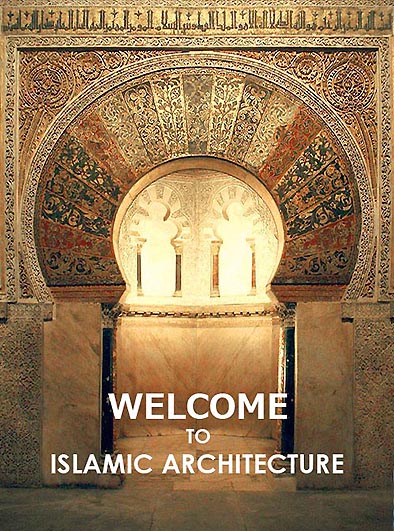Muhammad (c. 570 -632) born and brought up in Makka (Mecca), an ancient city in Arabia, heard God's message for the first time around 610 AD. That is the birth of the faith of Islam. Since then, Muhammad as a prophet gradually got frequent revelations from God and told them to his followers, so that those messages were compiled posthumously into the holy book for Islam, the "Qur'an" (Koran).
God is one and all men are equal before God. Under that doctrine Islam rapidly propagated to Syria, Persia, Egypt, so as to establish a great politico-religious empire expanding all the way to Spain in the west and as far as the Central Asia in the east.
As for India, Islamization began relatively late, at the end of the 12th century when invading troops from the west overthrew the Hindu dynasty of Delhi. Since Indian Islamic culture, which was to develop from the 13th century, was brought through Persia (Iran), Islamic architecture in India came to wear Persian character.
As the followers (Muslim for masculine, Muslima for feminine) worship the God five times a day, they built 'Masjid' (Mosque in English) as a place of worship all over the world. What is unique is every mosque is built in the direction of Makka. The wall facing Makka is called Qibla wall, center of which provides a 'Mihrab' (a niche to indicate this wall as the direction of Makka) and a 'Minbar' (pulpit) on its right side.
Generally outside of the prayer room is a Minaret (tower for calling the congregation to worship) and in the center of the courtyard is a fountain or an ablution tank for washing the followers' hands and feet before worship.
After the subjugation Muslims succeeded architectural traditions of each region and bred different styles of Islamic architecture from region to region. We can discern four representatives among those styles:
(1) Arabian Type that has a hypostyle hall covered by a flat roof
(2) Persian Type that has four Iwans facing each other around a courtyard
(3) Turkish Type that has a large spherical dome enclosing an astylar interior space
(4) Indian Type that has an outstanding worship hall in Makka side like an independing building
At all events, it can be defined as 'Membranous Architecture' or 'Enclosing Architecture' surrounding a courtyard or a worship space, in comparison with Hindu temples as 'Sculptural Architecture'.
As for the sects, there is the Sunni sect as a majority group and the Shiite sect as a minority group mainly in Persia, but architecturally there is very little difference.

The top page haing been used for Facebook
|








